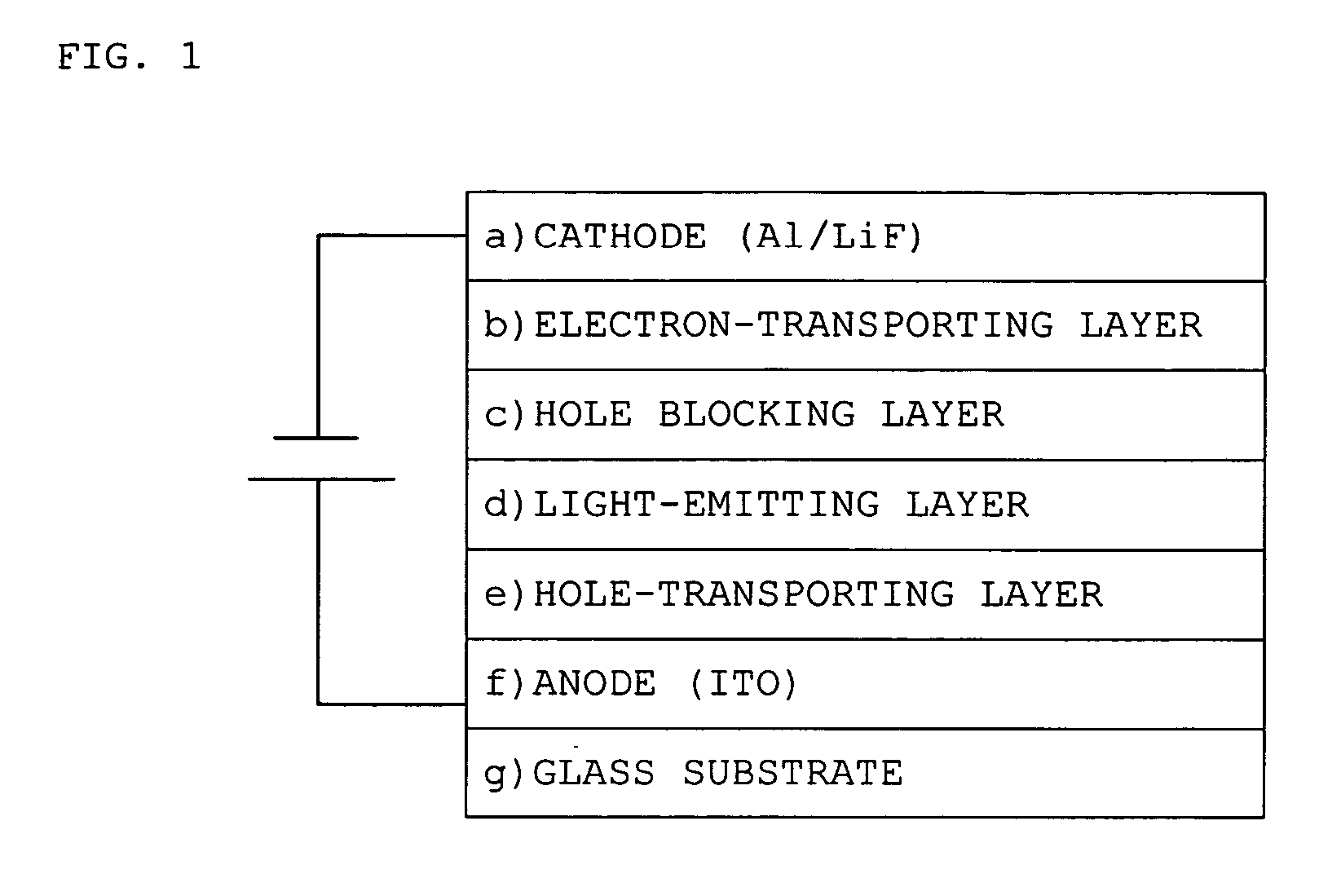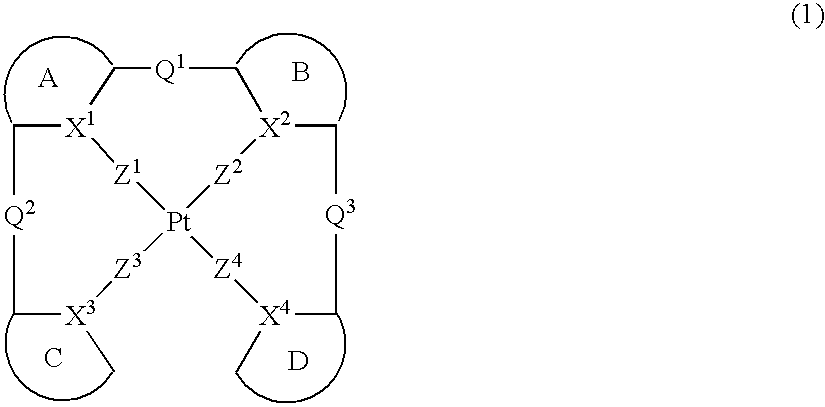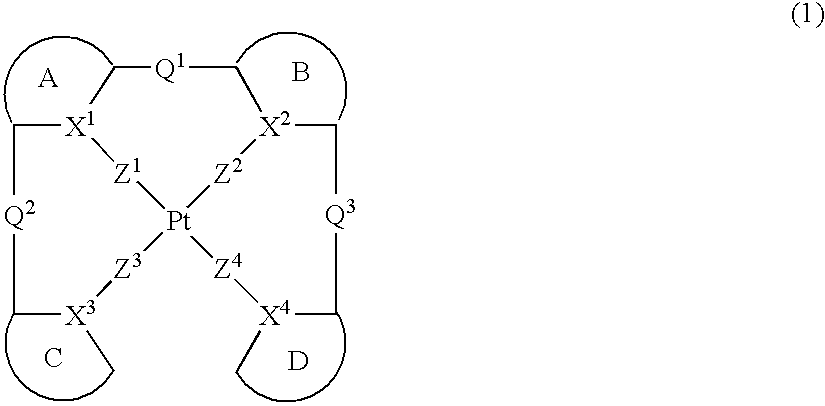Platinum complex and light emitting device
- Summary
- Abstract
- Description
- Claims
- Application Information
AI Technical Summary
Benefits of technology
Problems solved by technology
Method used
Image
Examples
reference example 1
Preparation of 2-bromo-6-phenylpyridine
[0127]
[0128] The title compound was prepared according to the method described in a document (J. Org. Chem., 2003, 68, 4918-4992).
[0129] In a nitrogen atmosphere, a mixture of dimethylaminoethanol (2.1 ml) and a hexane solution of 2-phenylpyridine (2.17 g) was cooled to −78° C., then a hexane solution of n-butyllithium (1.6 M, 26.5 ml) was added dropwise thereto. After dropwise, the mixture was allowed to warm to 0° C., then stirred for 2 hours. Thereafter, a toluene solution of bromine (2.5 ml) was added to the mixture at 0° C., then stirred for 2 hours additionally. Then, the mixture was stirred at room temperature for 1 day. Thereafter, the residual bromine of reaction mixture was neutralized by aqueous sodium thiosulfate, the mixture was extracted with toluene, the solvent was distilled off, and the residue was purified by silica gel column chromatography, thereby obtaining desired white solid (1.30 g).
[0130]1H-NMR(CDCl3): 7.39-7.53, 7.5...
example 1
Preparation of N,N-bis(6-phenylpyridine-2-yl)aniline
[0131]
[0132] The title compound was prepared according to the method described in a document (Angew. Chem. Int. Ed., 2003, 42, 2051-2053).
[0133] In a nitrogen atmosphere, a mixture of π-allylpalladium chloride dimer (3.9 mg), 43 mg of a hexane solution of tri-tert-butylphosphine (10 wt %, equivalent of 4.3 mg of tri-tert-butylphosphine) and o-xylene (10 ml) was stirred at room temperature. Then, sodium tert-butoxide (272 mg), aniline (131 mg) and 2-bromo-6-phenylpyridine (660 mg) obtained by Reference Example 1 were added to the mixture, and stirred at 120° C. for 1 day. After the reaction mixture was allowed to cool, to which was then added water, the mixture was extracted with toluene, the solvent was distilled off, and the residue was purified by silica gel column chromatography, thereby obtaining desired solid (510 mg).
[0134]1H-NMR(CDCl3): 7.04(d, J=8.0 Hz, 2H), 7.22-7.48(m, 13H), 7.63(t, J=8.0 Hz, 2H)
example 2
[0135] Preparation of a platinum complex
[0136] In an argon atmosphere, dichlorobis(benzonitrile)platinum (II) (228 mg), N,N-bis(6-phenylpyridine-2-yl)aniline (193 mg) obtained by Example 1 and 10 ml of o-xylene were stirred at 150° C. for 1 day. After the reaction mixture was allowed to cool, to which was then added water, the mixture was extracted with dichloromethane, the solvent was distilled off, and the residue was purified by silica gel column chromatography, thereby obtaining desired yellow crystal (172 mg).
[0137]1H-NMR(CDCl3): 6.43(d, J=8.4 Hz, 2H), 7.18-7.26(m,2H), 7.39-7.50(m, 4H), 7.57-7.82(m, 9H), 8.24-8.56(m, 2H)
PUM
 Login to View More
Login to View More Abstract
Description
Claims
Application Information
 Login to View More
Login to View More - R&D
- Intellectual Property
- Life Sciences
- Materials
- Tech Scout
- Unparalleled Data Quality
- Higher Quality Content
- 60% Fewer Hallucinations
Browse by: Latest US Patents, China's latest patents, Technical Efficacy Thesaurus, Application Domain, Technology Topic, Popular Technical Reports.
© 2025 PatSnap. All rights reserved.Legal|Privacy policy|Modern Slavery Act Transparency Statement|Sitemap|About US| Contact US: help@patsnap.com



